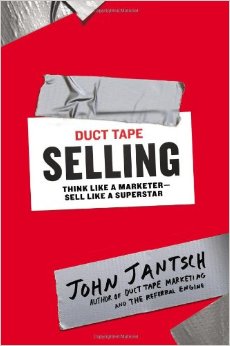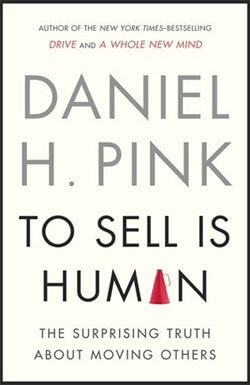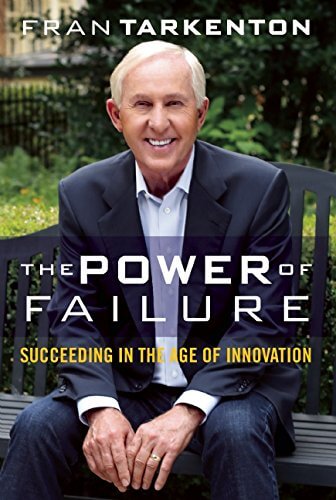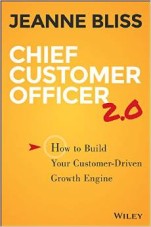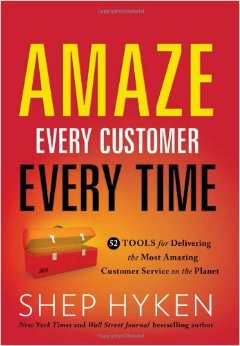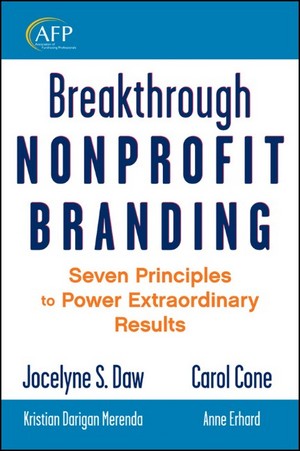charity
 After listening to a speech by the president and CEO of the Association of Fundraising Professionals (AFP) this week, I am feeling encouraged. Andrew Watt “gets it.”
After listening to a speech by the president and CEO of the Association of Fundraising Professionals (AFP) this week, I am feeling encouraged. Andrew Watt “gets it.”
The Scottish-born public policy and fundraising expert has lived in the U.S. since 2006 - enough time to bring his European perspective and humor to the fundraising profession. His take on the American election and politicians’ overall lack of understanding of the role charitable organizations play in our communities, was astute yet disappointing.
Watt has worked hard to build coalitions among organizations focused on philanthropy - to advocate for the sector in DC, to emphasize the importance of tax deductions for donors, and to raise awareness of the vast contributions and impact that nonprofits make to the world every day.
Unfortunately, he and his cohorts have a lot more work to do in getting Washington’s attention. Lobbying and access cost money - not so easy for nonprofit entities to do.
Watt made several strong points about the shift the charitable sector needs to take in order to sustain its impact. I will merge his points with mine to give you 3 things nonprofits and fundraisers can do to shift paradigms.
1. Nonprofits will benefit from a focus on creativity, innovation, and calculated risk taking. (Watt)
I, too, believe embracing innovation can solve more problems than sticking with the “usual” way of doing things. The world has changed drastically.
Technology allows us to communicate with constituents and prospects in ways we never could previously. It’s now a two-way conversation from which nonprofits can listen and learn before brainstorming new ways of tackling problems.
Taking calculated risks can give nonprofits an entrepreneurial approach that can win big, when successful. But, they shouldn’t shy away from making mistakes out of fear.
2. Nonprofits will benefit from embracing a customer-centric mindset.
Watt believes that in order to solve the problems of tomorrow, “we will need to connect with people the way that they want, at their level of philanthropic interest, in settings and issues that matter most to them.”
I believe that this requires a customer-centered paradigm built into the organizational culture. Just like it is in business, nonprofits cannot retain their customers (donors, volunteers, funders, etc.) if they don’t place them at the center of every decision and action.
3. Engage employees for better retention, commitment, and sustainability.
There’s something wrong with a sector that has a two-year fundraiser turnover rate. What can anyone accomplish in two years when relationship building is at the heart of fundraising?
And, to make matters worse, how many nonprofits hire fundraisers with high revenue-generating expectations and then don’t give them an ample budget to enable success? That’s counter productive.
When nonprofits begin to treat their employees as their first market, great things can happen. Empowering them, honoring them, and rewarding them will turn them into devoted brand ambassadors who will stick around longer.
What do YOU think? Do nonprofits and fundraisers need to shift paradigms?
Share this post!















 Lance Armstrong may or may not be a cheat in the cycling competition world, but he wasn’t cheating when he founded the Lance Armstrong Foundation in 1997. As you read the foundation’s milestones, it is very clear that the nonprofit has accomplished a great deal in its history.
Lance Armstrong may or may not be a cheat in the cycling competition world, but he wasn’t cheating when he founded the Lance Armstrong Foundation in 1997. As you read the foundation’s milestones, it is very clear that the nonprofit has accomplished a great deal in its history.
From cancer survivorship programs, to launching LIVESTRONG.org, an online resource for cancer survivors; from releasing the National Action Plan for Cancer Survivorship with the CDC to hosting conferences and summits, the Lance Armstrong Foundation’s boards, volunteers, and staff have supported cancer survivors on a daily basis.
Armstrong may have been its founder and board chair (until recently); he may have been the inspiration behind people’s initial involvement, but in the end, who benefits from the charity’s work? Cancer survivors, their families, and healthcare providers. How can any donor contributing to the charity’s good work want to penalize the people the foundation serves because of one individual’s unrelated acts or behavior?
The mission is bigger than me. It’s bigger than any individual,” Armstrong said on Friday in his opening remarks at Livestrong’s 15th anniversary celebration.”
What do you say? Do you say, “Shame on them,” or do you think they make a good point?
Related:
Some Livestrong Donors Want Money Back After Lance Armstrong Doping Scandal
Share this post!















 When your business or nonprofit organization sends out form thank-you or sales-related letters, do you add a short handwritten note? Yes, I know it depends on the quantity, but what about a personal note to your top prospects, customers, or donors?
When your business or nonprofit organization sends out form thank-you or sales-related letters, do you add a short handwritten note? Yes, I know it depends on the quantity, but what about a personal note to your top prospects, customers, or donors?
A few years back, neuromarketing expert, Roger Dooley wrote, “Direct marketers and market researchers have long employed a variety of personalization techniques to boost response rates, including the handwritten note.”
Dooley cites an older study by Robert Cialdini that examined three varieties of a survey cover letter. “The response rate was a mere 36% for the plain printed cover letter. Adding the handwritten note improved the response rate by one third to 48%. The Post-It more than doubled the response to 75%. A second test to examine the possibility that some magic in the Post-It note itself was responsible for the higher response rate included cover letters with a blank sticky note attached. That approach generated only a slightly higher response rate of 42%.”
So, why am I discussing this today?
I have received many donation thank-you letters in the past year, some from people I know personally. Not one had a handwritten note from the sender - until recently.
I sent in a mere $10 donation to a group campaigning for a state proposition in the upcoming election. At the bottom the campaign chair wrote:
Thanks so much for your support, Elaine!”
And that was for $10! For the $200+ donations I made last December, all I got were form letters. Now, what do you think I will do?
I am going to give the proposition campaign another gift today! I appreciated the handwritten thank you note.
As Dooley wrote: “It seems that what is causing the boost is a ‘reciprocity’ effect. The recipient recognizes that the sender apparently put some personal effort into the mailing, and is more likely to reciprocate with some effort of his own.”
It worked for me. Does it work for your business or nonprofit?
Share this post!















 When a cardboard mailer arrived last week from Veterans of Foreign Wars of the United States, (VFW) I was drawn to it. Not only did the attractive colored design attract my attention, the call to action was quite compelling:
When a cardboard mailer arrived last week from Veterans of Foreign Wars of the United States, (VFW) I was drawn to it. Not only did the attractive colored design attract my attention, the call to action was quite compelling:
WOUNDED VETERANS ARE IN CRISIS!
YOUR HELP IS NEEDED NOW FOR RETURNING HEROES.”
When I opened the package, the freebies that poured out were more than any other charity direct mail campaign I had ever seen!
- 8 Christmas cards and matching envelopes
- 1 sheet of Christmas wrapping paper
- 1 panel of Christmas return address labels combined with sticky gift tags
- 1 printed 2013 calendar card with logo pen attached
- Plus, the promise of receiving a large “patriotic” tote bag with every gift over$15!
The cover letter starts out mentioning the gifts in an attempt to overcome the initial barrier the organization might expect from recipients:
When we began sending out these free special edition Christmas cards and personalized address labels, people said we were crazy!
‘You can’t do it - the VFW will go broke!’ many doubters said. ‘People will use their gifts, but you’ll never hear from them again.’
But it didn’t turn out that way at all. In fact, thousands of people like you have chosen to help us serve our nation’s veterans - many seriously disabled. I’m counting on you to keep helping us prove the doubters wrong…”
OK, so now, I am totally curious. I’ve watched Drew Griffin’s reports on CNN’s Anderson Cooper 360° as he raked a couple of charities over the coals recently, questioning their huge fundraising and direct mail expenses with fewer mission-related activities or grants. So, I visited GuideStar.org to check out VFW’s Form 990 it files each year for the IRS.
Now, without doing more due diligence, I cannot address the grants the national organization allocates to its state affiliates and other veterans’ organizations. Nor, did I research which activities the charity conducts in other countries where it spends money. The 990 shows allocations to individuals for educational assistance, scholarships, phone cards, food, shelter, and utilities, and savings bonds distributed for an essay program. So, it appears that the organization is addressing its mission: “To foster camaraderie among United States veterans of overseas conflicts. To serve our veterans, the military, and our communities. To advocate on behalf of all veterans.”
Yet, there were still several things nagging at me:
- The organization’s revenue in 2011 was $93,326,178 and its expenses were $90,883,297.
- Grants and similar amounts paid out were $10,470,982; salaries/compensation/employee benefits totaled $14,571,132; professional fundraising fees were $2,298,001 and other expenses came to $63,543,182!!!
- Included in the “other” expenses were direct mail and dues notifications of $47.3 million; the VFW magazine and other publications came to $5.6 million; conferences and meetings were $2.3 million; and travel was $1.5 million. And, that’s not the complete list.
- This seems to contrast what the VFW states on its Web site: “Over the last seven years, a full 95% of donations received were directed exclusively to operating veterans service, community service, legislative advocacy and military service programs worldwide.”
- The organization’s tagline is “No one does more for veterans.”
One interesting thing I noted was that the fundraising services supplier, Brickmill Marketing Services, is connected to Quadriga Art, the company that Anderson Cooper’s team was researching in its report on the Disabled Veterans National Foundation. Read the article about these two companies in The Chronicle of Philanthropy.
Do I have total confidence in this organization to consider making a donation? No. I would certainly need to learn more first.
As a marketing consultant who works with many honorable nonprofit organizations, it bothers me when I see a small number of organizations taint public perception for all charities. So, do your own research when it comes to making charitable gifts this holiday season. The majority represent many worthwhile causes.
Share this post!















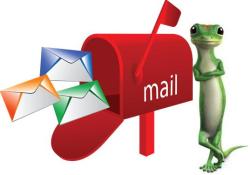 Please tell me it isn’t so. It just can’t be. I received a set of return address labels from Geico, the insurance company. Now, businesses are joining charitable organizations in this onslaught of labels!
Please tell me it isn’t so. It just can’t be. I received a set of return address labels from Geico, the insurance company. Now, businesses are joining charitable organizations in this onslaught of labels!
I really can’t take any more. I have enough return address labels to last until I am dead… and beyond. Every charity under the sun sends those things. And why? So fundraisers can create a sense of obligation to send them a donation. I get it.
But, why does it have to be return address labels? How many of us use snail mail as much as we did before? I don’t know about you, but I haven’t mailed a personal letter in a long time. Payments, yes, when I can’t pay them online. Special occasion cards, yes, but only once in a while. The rest receive e-cards or phone calls.
Holiday cards? Yes, I send a few personal ones, but the majority are for business purposes, and they have printed return addresses on them.
So, it’s time to send a strong message to the corporations of the world who think this customer acquisition approach will work. Don’t go down this path and stop sending return address labels. PLEASE!!!
Oh, and message to Geico… I’ll take the annoying English-accented gecko anyday over return address labels. 
If I Get Another Set of Address Labels I’m Going to Scream
Charity Address Labels Don’t Cut it With Younger Prospects
Share this post!















 I found a Web site that intrigued me so I started to browse around. And, that’s when it hit me. Sadness all over.
I found a Web site that intrigued me so I started to browse around. And, that’s when it hit me. Sadness all over.
The site, called GoFundMe, “is a do-it-yourself online fundraising service that has helped thousands of people raise millions of dollars in online donations for the fundraising ideas that matter to them most. GoFundMe allows regular people to accomplish extraordinary things with easy-to-use personal donation websites. From exciting life events like weddings & graduations to challenging circumstances like accidents & illnesses, the GoFundMe fundraising software remains one of the best ways to raise money online.”
As someone who works with many nonprofit organizations, I thought the site would be rife with charitable requests from organizations. And, there is a section devoted to them. But, there’s more. There are personal requests by the thousands. Here are just a few examples:
- Lindsey Creller Lewis is asking for donations so her family can visit her dad before he dies. He was recently diagnosed with stage 4 Squamous cell carcinoma of the lung that has spread to the chest wall and lymph nodes. In addition, he has dementia. Her husband was laid off from work in July of 2010, and since then, unemployment and their savings have run out.
- Charlie Moreno is asking for donations to pay for Lesette Silva’s funeral. The little girl’s life was lost to a tragic accident on August 5th 2012 at Otay Lakes Resevoir. Charlie says, “I please ask that if you can find the compassion and sincerity to understand that along with the emptiness that the father of Lesette Silva feels during his mourning for the loss of a child comes the heavy financial burden of laying his child to rest in peace for ever and help ease the financial cost because there is no price in pain and suffering other than that.”
- Val Erie is trying to raise money to pay for her rescued kitten’s broken leg or the pet will need to be euthanized.
- Devin Collman needs a wheelchair van to get him around town to school and medical appointments. The family’s van is about to die and it won’t go over 40 miles an hour because of transmission problems.
- Lloyd Anthony D is raising money to help his mom “get a new place and help buy clothes and food and everything needed to start over.” Her previous apartment was ravaged by fire.
It is just so sad reading these stories. I wish I could help them all.
There are also fundraising requests for many other things like:
- Travel expenses to a talent competition
- Expenses for an American college French major to attend a semester in Paris
- Money to open up a bakery for special occasion custom cakes
- Expenses to enter the 2013 Miss Iowa pageant
- Money for a honeymoon trip
The interesting thing is that I expected many more frivolous requests than charitable ones, yet that wasn’t the case. Take a look for yourself.
Then, like me, feel the gratitude if your life is good.

















Flickr photo by cfinke
The purpose of cause marketing is to create a mutually beneficial relationship between a business entity and a charity. The business scores points with its customer base and employees, while practicing corporate social responsibility (CSR). The charity benefits with new in-kind gifts or cash donations. It’s a win-win situation.
Of course, the options that businesses can choose are endless, but ideally, they’ll want to select a charity that resonates with their employees, customers, and brand. Occasionally, a company makes a choice that just doesn’t appear to match. The latest one belongs to Wendy’s.
According to Huffington Post blogger, Laura Rothkopf, “Wendy’s is serving up a new kind of, um, questionable combo to raise awareness for a cause.” The fast food chain is partnering up with the Juvenile Diabetes Research Foundation and will dole out four small Frostys - Wendy’s signature ice cream treat - to anyone who donates $1 to the organization.
Doesn’t this sound a bit “off” to you? Diabetics and sugar don’t mix. “One small Original Chocolate Frosty from Wendy’s contains 42 grams of sugar,” adds Rothkopf. “Multiply that by four, and that’s 168 grams of frosty-goodness awarded to anyone who chooses to support the JDRF.”
As I wrote in my comment on the blog:
Charities of all kinds that struggle to generate revenue often have a hard time accepting donations from companies and individuals that represent unfavorable products and services, or have poor reputations. Sure, they need the money, but what’s the bad publicity worth?
A board member at a breast cancer charity where I once worked, had this to say when they had to decide to take a donation from a retail outlet that sold cigarettes: “I don’t care where you get the money, just cure the damn disease!”
This type of cause marketing partnership is a tough call. Charities want to be ethical and live by their vision and values. On the other hand, they also want to do more.
If I were advising the charity, I’d caution it regarding public perceptions, whether right or wrong. With social media and the ease of information sharing today, it doesn’t take much to create a negative brand perception. It’s not worth the risk.
Now, had Wendy’s offered to affiliate another product with the donation - a non-sugary, nutritionally valuable item - that would have been different. Realistically though, how many “nutritional” products do fast food outlets market and sell? JDRF wouldn’t have reaped as much money from those sales regardless.
What’s your take? Should JDRF have bowed out of this one?
Share this post!





















